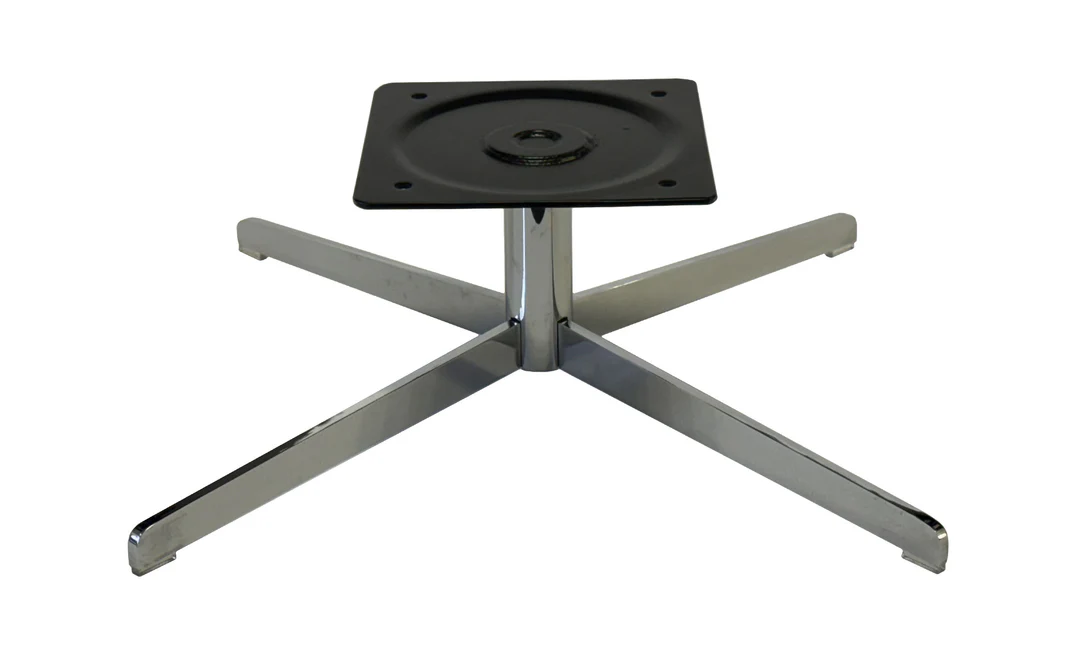If you’ve ever spun around in your office chair, turned a barstool to talk with a friend, or rotated a vise in your workshop, you’ve experienced the magic of a swivel base. Though simple in design, a swivel base is one of the most practical and versatile components in furniture and equipment manufacturing.
A swivel base allows a seat, tabletop, or tool to rotate smoothly around a fixed axis, providing mobility, flexibility, and convenience. From ergonomic chairs and dining stools to camera mounts and machine tools, swivel bases have a wide range of everyday uses.
In this article, we’ll explore the top 10 uses of a swivel base in furniture, tools, and office chairs — along with its benefits, designs, and why it’s an essential feature for modern comfort and efficiency.
Swivel Base in Office Chairs
Perhaps the most recognizable use of a swivel base is in office chairs. These bases allow users to rotate 360 degrees without moving the chair’s legs or wheels.
Benefits include:
- Increased mobility: Move between desks or workstations easily.
- Improved posture: Reduces strain on the back and neck.
- Enhanced productivity: Allows smooth multitasking.
Modern ergonomic chairs combine swivel bases with height adjustment and tilt functions, ensuring maximum comfort and efficiency for long working hours.
Swivel Base for Bar Stools and Kitchen Chairs
In modern home design, bar stools and kitchen chairs with a swivel base are increasingly popular. These seats let users rotate freely, making it easier to enter or exit a counter seat without dragging the stool.
Common types:
- 360° swivel bases for full rotation.
- Memory-return swivel bases that automatically reset to the forward position.
A swivel base in furniture like this adds both convenience and sophistication, especially in kitchens, cafes, and home bars.
Swivel Base in Recliners and Lounge Chairs
A swivel base adds luxury and mobility to recliners and lounge chairs. These bases let users turn toward a TV, window, or conversation area without repositioning the entire chair.
Key advantages:
- Seamless movement with minimal effort.
- 360° rotation for flexible viewing.
- Modern aesthetic appeal.
Many high-end recliners now use a concealed metal swivel base combined with a rocking or gliding mechanism for added comfort.
Swivel Base for Car Seats and Mobility Aids
In the automotive and healthcare industries, a swivel base can make life significantly easier. Car seats and mobility chairs with swivel mechanisms help people enter and exit comfortably.
For instance:
- Elderly and disabled users benefit from rotating car seats.
- Medical chairs and wheelchairs use swivel bases for better transfer and positioning.
This design reduces strain and enhances independence for users, making it one of the most valuable applications of swivel technology.
Swivel Base in Tools and Workshop Equipment
In workshops, garages, and industrial settings, swivel bases improve precision and flexibility. One classic example is the swivel base vise, a vital tool in metalworking and woodworking.
Why it’s essential:
- Enables better access to the workpiece.
- Provides adjustable clamping angles.
- Enhances control and safety during use.
A vise with a swivel base allows craftsmen to rotate the workpiece instead of constantly repositioning it, saving time and effort.
Swivel Base for Tables and Display Stands
Tables with a swivel base are practical in both homes and businesses. In restaurants, they allow servers and guests to access dishes easily, while in exhibitions or stores, display stands with swivel bases make products more accessible and attractive.
Applications include:
- Rotating coffee tables.
- Display shelves and merchandise stands.
- Lazy Susan dining tables.
A swivel base helps achieve smooth rotation, perfect for communal dining or interactive product showcases.
Swivel Base for Cameras and Monitors
Photography and media setups rely heavily on swivel bases for flexibility and precision. Camera tripods, CCTV mounts, and monitor arms use swivel bases for 360° rotation and adjustable angles.
Benefits:
- Smooth panning for video recording.
- Quick repositioning for different angles.
- Reduced setup time for photographers and videographers.
Whether you’re setting up a home studio or security system, a swivel base ensures your equipment stays mobile and efficient.
Swivel Base in Marine and Aviation Seats
Boats, yachts, and aircraft often use swivel bases in their seating systems. Pilots, captains, and passengers can rotate safely to operate controls or interact with crew members.
Marine and aviation swivel base advantages:
- Allows rotation in compact spaces.
- Enhances communication and accessibility.
- Improves ergonomic seating in limited cabins.
Swivel bases designed for marine or aviation use are usually made of corrosion-resistant stainless steel or aluminum for durability and safety.
Swivel Base in Industrial Machinery
Heavy machinery and mechanical systems also benefit from the swivel base mechanism. In robotics, cranes, and assembly lines, swivel bases enable precise and controlled rotation.
Key features include:
- Load-bearing strength for industrial use.
- Controlled rotation using bearings or hydraulic systems.
- Integration into mechanical arms for precision tasks.
In manufacturing, a swivel base can make the difference between efficient operations and wasted motion, reducing time and improving safety.
Swivel Base in Outdoor Furniture
Outdoor and patio furniture now often includes a swivel base for comfort and convenience. Swivel patio chairs and gliders let users enjoy flexible movement while relaxing.
Common materials used:
- Powder-coated aluminum or steel for weather resistance.
- Rattan or wicker designs combined with metal bases.
Swivel bases make outdoor living more enjoyable — allowing you to turn with the sun, the view, or the conversation effortlessly.
Advantages of Using a Swivel Base
Beyond its many applications, the swivel base offers several universal benefits:
- Enhanced Comfort: Allows natural movement and reduces strain.
- Versatility: Works in furniture, industrial tools, and automotive settings.
- Space Efficiency: Eliminates the need to move heavy furniture manually.
- Durability: Built from sturdy materials like steel, brass, or reinforced nylon.
- Aesthetic Appeal: Adds a modern, dynamic look to furniture designs.
No wonder the swivel base has become an essential part of modern design and functionality.
How Swivel Bases Work
The typical swivel base consists of two plates connected by a central bearing mechanism that allows rotation. Bearings or ball races enable smooth, frictionless motion.
Common Types:
- Ball bearing swivel base: Used in chairs and stools.
- Lazy Susan type: Ideal for tables and displays.
- Locking swivel base: Used in machinery for controlled movement.
The engineering behind a swivel base may seem simple, but its reliability and versatility are what make it indispensable.
Maintenance Tips for Swivel Bases
To keep your swivel base operating smoothly:
- Lubricate bearings every 6–12 months.
- Tighten screws and inspect for wear.
- Avoid overloading beyond the weight capacity.
- Clean debris and dust regularly to prevent friction.
Proper maintenance extends the lifespan of your swivel base and ensures safe, silent operation.
Conclusion
From office chairs and recliners to tools and industrial machinery, the swivel base plays a crucial role in how we move, work, and relax. Its ability to rotate smoothly adds efficiency, accessibility, and comfort across countless applications.
The top 10 uses of a swivel base show just how versatile this component truly is — seamlessly blending engineering precision with ergonomic design. Whether you’re upgrading your furniture or fine-tuning workshop equipment, investing in quality swivel bases means investing in long-term convenience and performance.
FAQs
1. What is a swivel base used for?
A swivel base allows objects like chairs, tools, or tables to rotate smoothly around a central axis, providing flexibility and ease of movement.
2. How does a swivel base work?
It works through a bearing system or circular plate mechanism that enables 360° rotation between two connected surfaces.
3. Are swivel bases durable?
Yes. Most swivel bases are made from steel, aluminum, or reinforced plastic designed to withstand heavy use and weight.
4. Can I add a swivel base to existing furniture?
In many cases, yes! You can retrofit chairs, stools, or tables with aftermarket swivel bases using standard tools and mounting plates.
5. How do I maintain a swivel base?
Regularly lubricate bearings, tighten screws, and keep the area clean. This prevents squeaks, corrosion, and mechanical wear.
Also read: Desert Clothing: What to Wear in Hot, Dry, and Harsh Environments




Leave a Comment